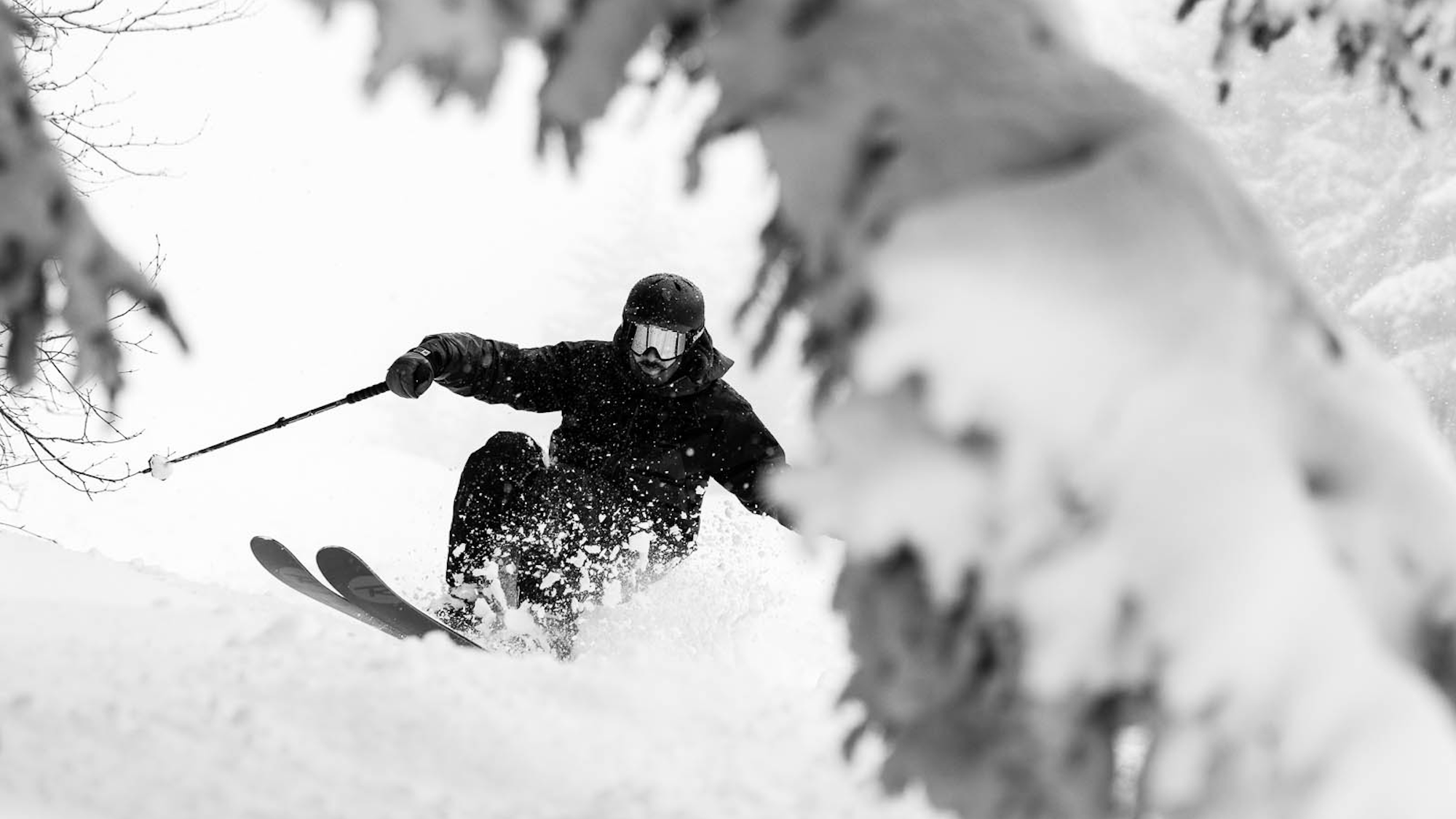WORDS — Graham Averill
PHOTOS — Derek DiLuzio
It’s almost midnight when the tall guy in the camo jacket hands me a bottle of whiskey and says, “Don’t worry, you’re in the land of the freaks now.” His friends chuckle. We’re in a tool shed in the middle of West Virginia. Snow is falling hard outside, someone is shucking oysters out of a burlap bag and the Grateful Dead is playing at peak volume on speakers mounted in the corner of the room. I had a hunch things might get weird when I planned a ski trip through West Virginia with two buddies, so I take the whiskey and wait for my chance to crack open an oyster from the bag. Like the nice man in the camo said, I’m in the company of freaks.
What could possibly go wrong?
The idea was ambitious: Road trip into West Virginia and hit all five ski resorts in the state in four days, camping along the way. If you don’t live in the South, you might not consider West “By God” Virginia as a viable ski destination. If the state is known for anything, it’s coal extraction, being overwhelmingly patriotic or just being real fucking redneck. All of which are true, but you’re just scratching the surface with these stereotypes. West Virginia is in the midst of an identity crisis. Coal jobs are waning with the introduction of new, cleaner energy sources and adventure tourism is on the rise, but there’s still tension between the old and new economies as long-time locals and newcomers to the state occasionally clash. I’m not one to judge, though; I’m having my own identity crisis, amplified by Covid-19 restrictions. Am I a skier if I can’t ski those big mountains out West? Consider this trip a search for identity—a fact-finding mission where I venture deep into the heart of the South to find a ski culture I can call my own.
West Virginia has some of the most rugged mountains on the eastern seaboard and, come winter, those mountains can pull down close to 200 inches of snow, sucking up the tail end of Lake Effect storms moving out of the Midwest. Still, skiing in West Virginia is a gamble because of the preeminent freeze/thaw cycle: You could get ice or dirt or knee-deep powder, which is why I typically choose not to roll the dice and simply fly west for more guaranteed conditions. But since universal travel restrictions had shut down Rocky Mountain ski trips for many of us, I’m looking to my own backyard for a powder fix.
I roped two ski partners into the trip, Jeff Keener and photographer Derek DiLuzio, neither of which had skied much in West Virginia and were skeptical about how the terrain would stack up against their experience in the Rockies. Mother Nature had delivered a series of storms that suggested solid early season conditions, but what the hell would pass for ski culture in a state that has more ATV trails than paved roads? By the time we find ourselves entrenched in the tool shed oyster fest, all of our concerns had vanished. Snow is falling hard and there’s talk amongst the crew of a night mission for crusty turns on the mountain behind the shed.
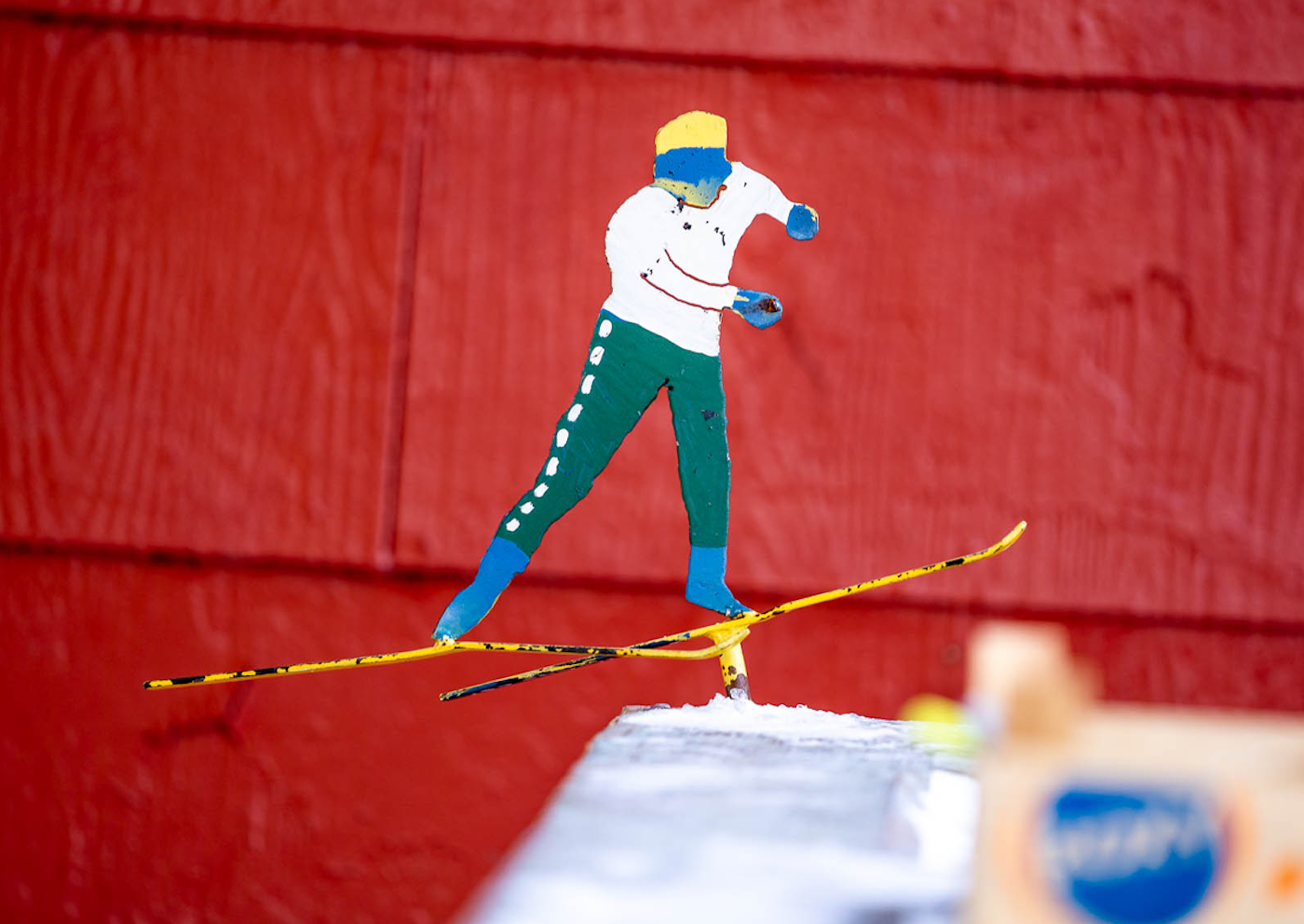
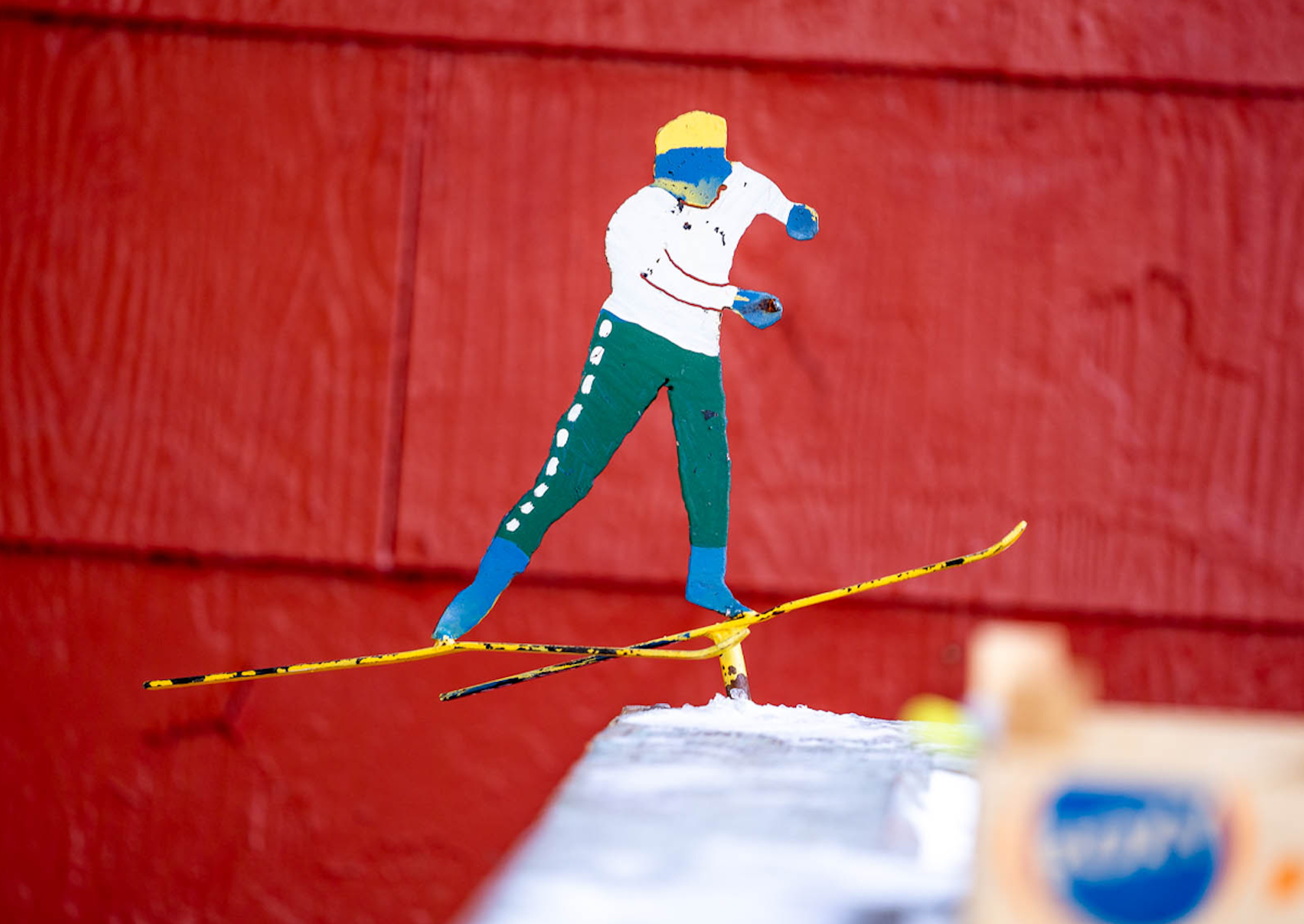
Things weren’t always looking so rosy, though. The first couple of days were rough. Here are the highlights: We watched a little girl in pigtails force her brother to tow her around the snow in circles, like skijoring, but instead of a horse it was a chubby boy in a bright orange hunting suit (serendipitously, John Denver’s “Country Roads” was playing on the resort’s PA system at the same time); we bounced off the hardwoods while skiing ice through trees at Snowshoe Mountain Resort (a sign at the top of the mountain warned us that the powder we saw in the trees was “a deceitful mistress”); somehow we didn’t go to the porn shop right next to the first resort we skied; and we spent the night in a tent next to a dumpster in a parking lot.
Seriously.
We were supposed to rent a swanky camper van with heat and a kitchen, but we decided that would be too bougie for us, so we towed a Sylvan Sport, which is a glorified four-person tent that doubles as a ski rack. We had to strip our gloves to set up the tent, which would have been fine if it wasn’t seven degrees with whipping wind outside. Listening to the Beastie Boys and drinking Coors helped, but our fingers still went numb.
I fall asleep listening to Keener talk about sewing a winter coat out of road kill pelts for skiing on really cold resort days. Keener is my “ski spouse.” We plan days on the local hill together, a tiny “resort” with 60 acres of man-made ice to shred, build bigger ski trips around each other’s schedules, go on epic, all-day cross-country excursions as a duo… Does our winter marriage cause tension with our actual wives? Sometimes. But if you want to maintain a healthy relationship, you’ve gotta put in the work. Derek asked if deer fur would be the best material for that road kill performance jacket. Keener scoffed. “Too heavy. Raccoon fur would be ideal. Lighter, better insulating. It would take a lot of raccoons, though.”
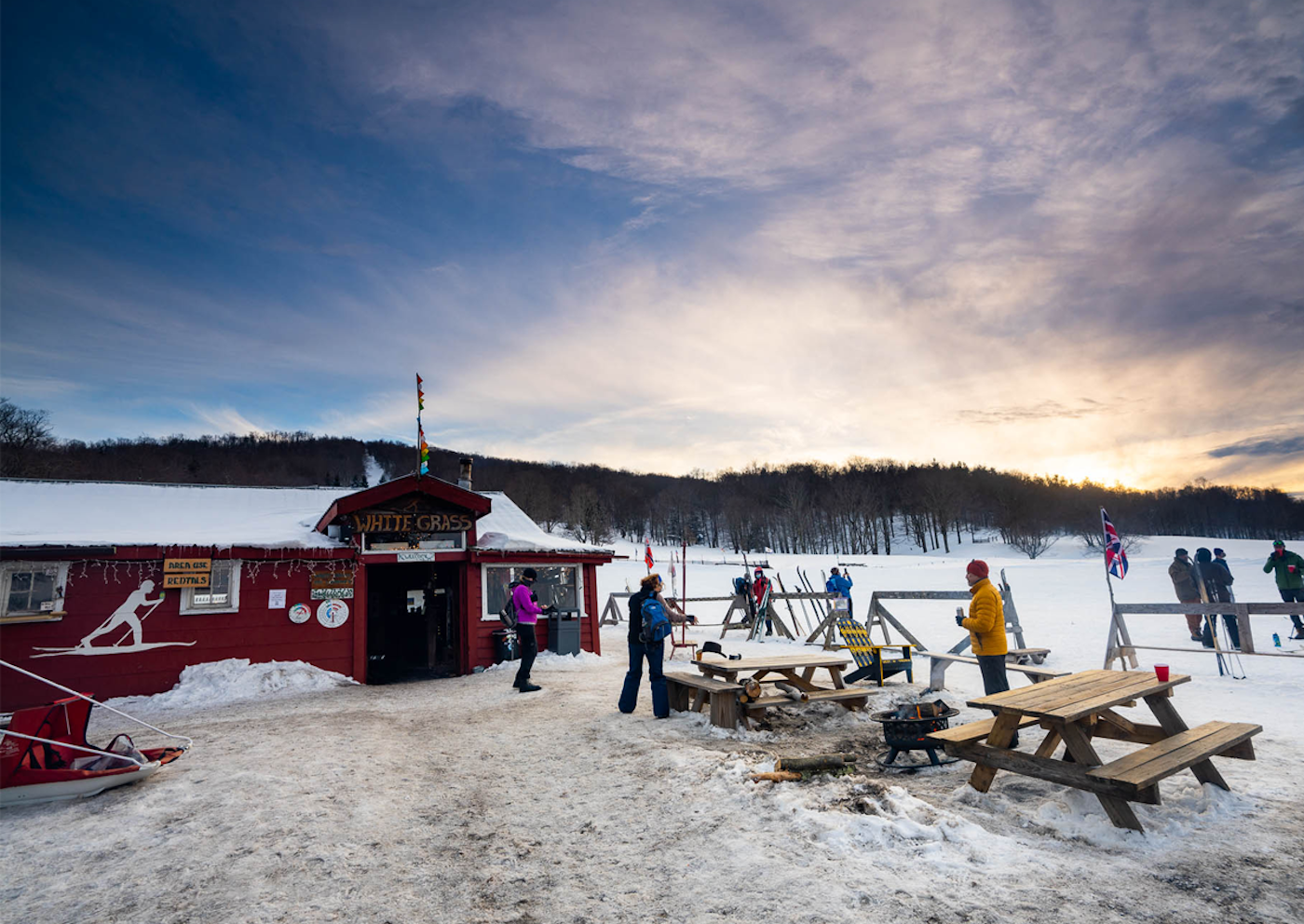
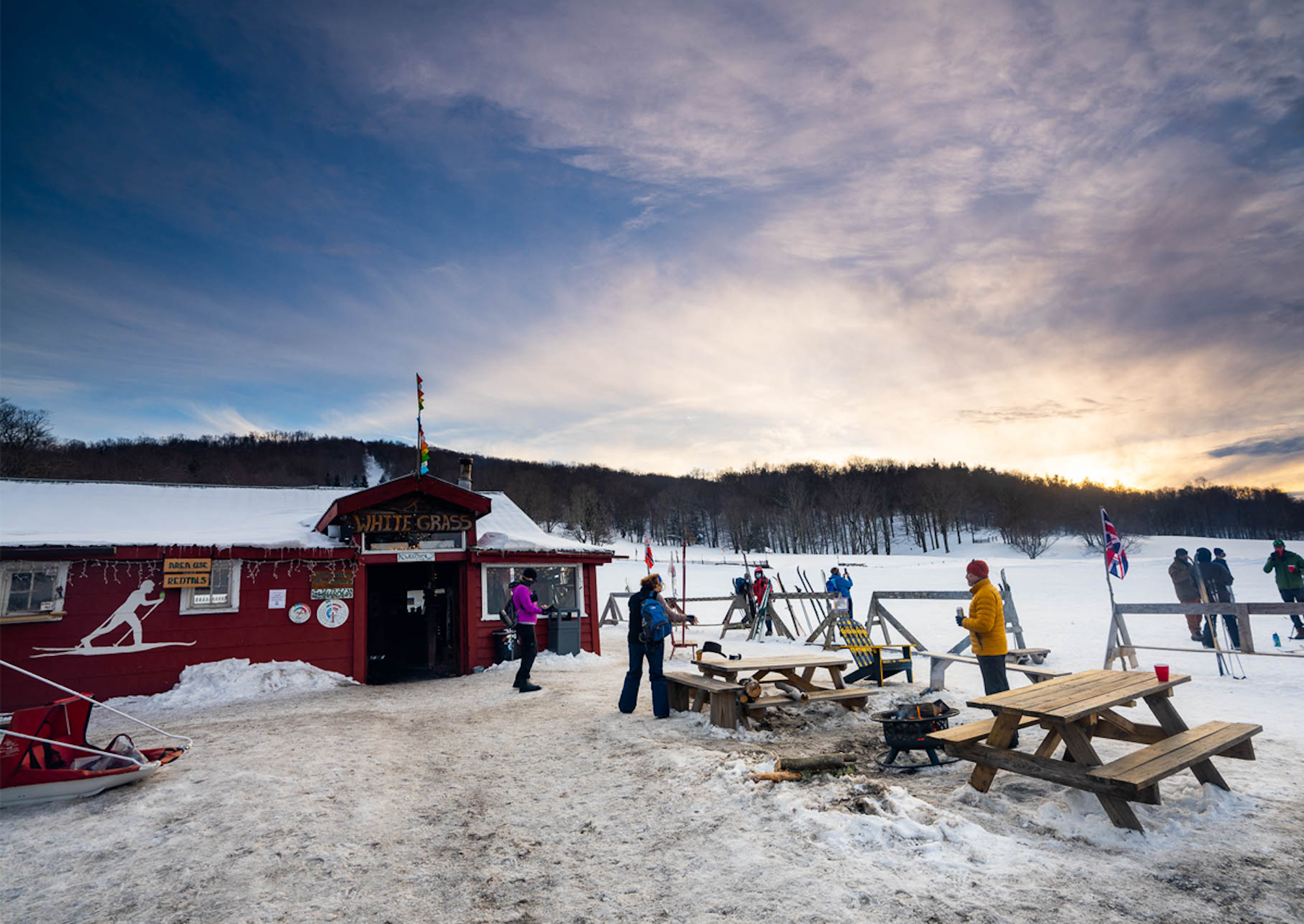
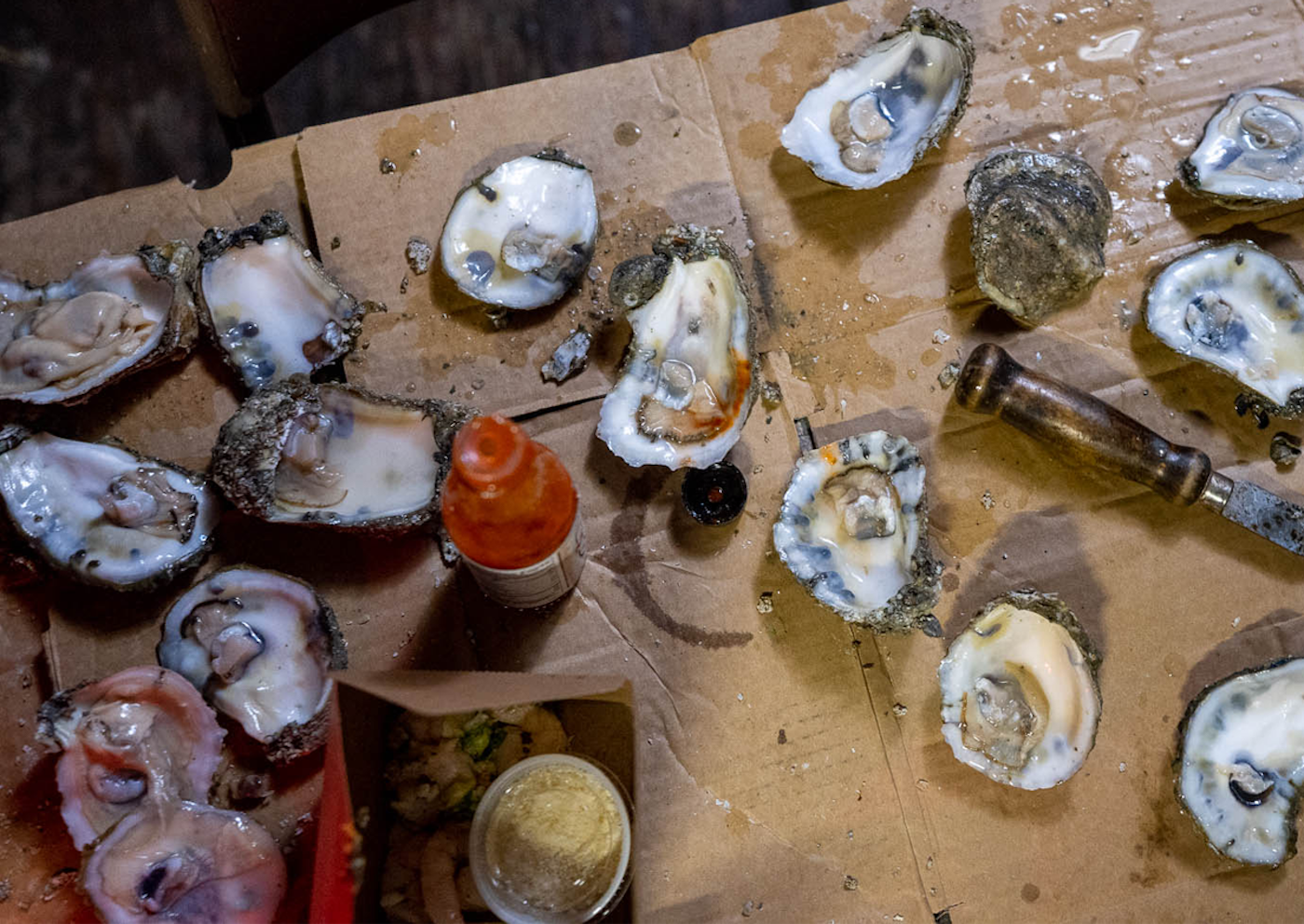
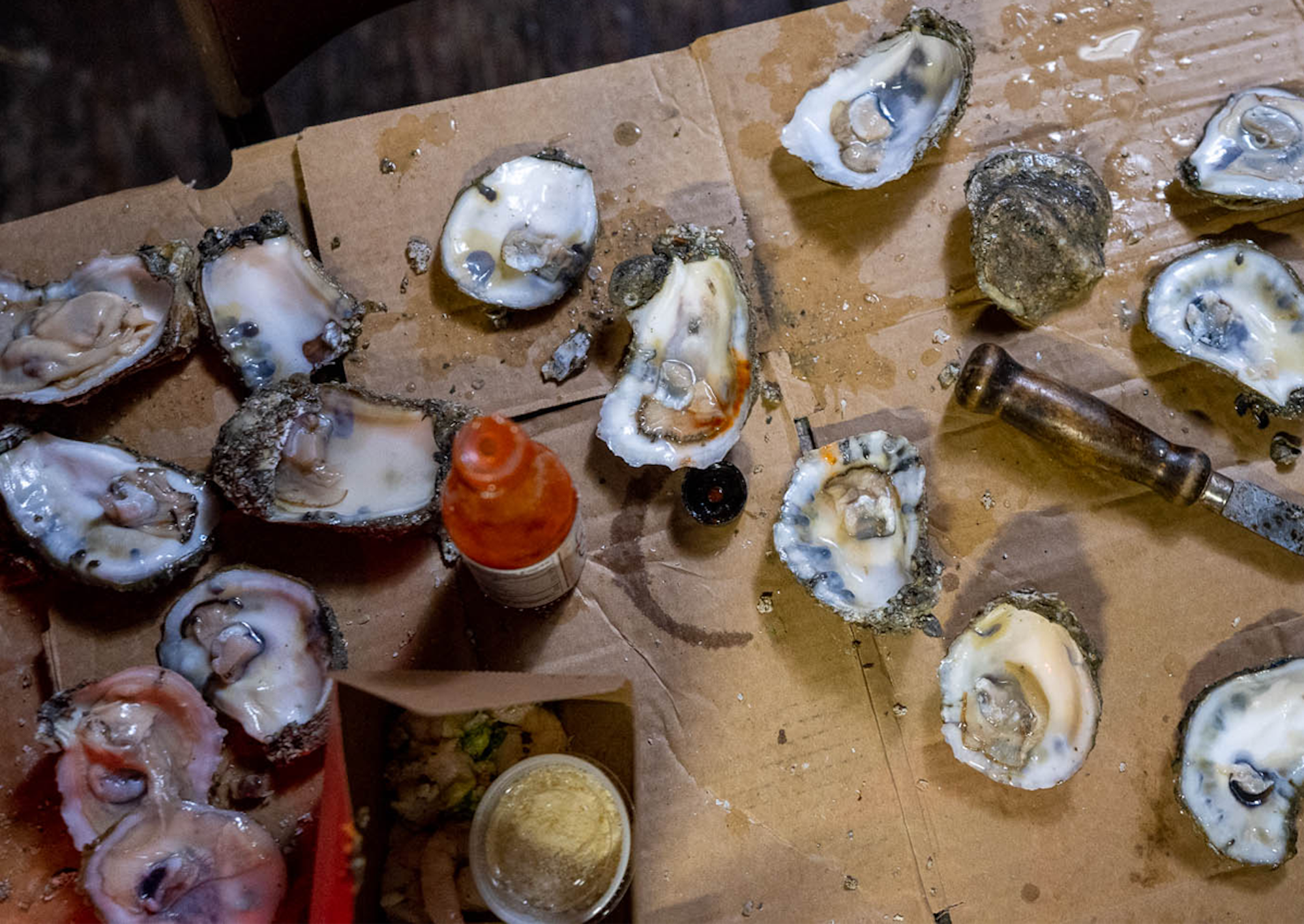
So, yeah, things are looking up as we huddle inside the tool shed, slurping oysters and trying not to think about how far we are from the nearest ocean. The shed is in Canaan Valley, a broad, agricultural meadow at 3,200 feet, surrounded by a bowl of mountains rising 1,000 feet higher. Look at Canaan Valley from the right angle and it appears downright volcanic, or maybe an impression left by an asteroid. It’s also ground zero for skiing in the South, boasting two alpine resorts (Canaan Valley Resort and Timberline) and a ski-touring center called Whitegrass, which attracts a mixture of hippies and Nordic nerds, life-long tele devotees, split-boarders and new school rippers with AT gear. They all gather to drink, eat by the fire and explore the backcountry terrain that rises from the edge of Whitegrass’ iconic red lodge. Combine the old school tailgating scene at Arapahoe Basin, the blue collar roots of the Upper Peninsula and the crunchy vibes of Vermont’s backcountry, and you’ll start to understand the charm of Whitegrass. As for the terrain, it’s more backcountry than cross-country—all up and down on ridges rising from the meadow surrounding the lodge. Watch videos of kids who grow up here and you’ll see them hucking boulders on skinny skis in the trees above the lodge.
“It’s a small hippie enclave in the middle of West Virginia,” says Athey Lutz, the guy in the camo jacket handing out whiskey. “Look around and you might think you’re in Michigan’s UP, or Vermont or hell, even Norway. It’s a nice mix of redneck and hippie cultures.”
The whiskey we’re drinking actually comes from Athey’s own distillery a few miles down the road. He grew up in Canaan Valley, skied competitively in college and now coaches the local youth race team. The tool shed is called Barry’s World, named after a beloved Whitegrass volunteer/employee. It’s the closest thing to a VIP lounge you’ll find in this part of West Virginia—the go-to spot for locals in the know to fix their skis, grab a beer and get warm. There’s so much going on in the small space that it’s hard to focus. Spools of thick-gauge wire are stacked on shelves, along with air compressors, tool boxes and cans of loose screws. Christmas lights and flags hang from the ceiling, a furnace clicks and hums, pitchforks and hoes are stacked in a corner, tele bindings and small woodland creatures are mounted to the walls. There’s a keg of beer and a small table in the center of the room with three different varieties of hot sauce. Someone has hooked up a vise to make shucking oysters easier.
A half a dozen skiers are crammed in the shack, watching the snow come down outside and talking about the bomber early season conditions. Chip Chase is the ring leader, owner of Whitegrass and local legend. He’s small in stature, soft spoken with a bandana around his neck, but has an oversized stoke that’s contagious. Maybe it’s the moonshine and oysters talking, but I’m convinced that this ten-by-seven-foot shack is the center of the universe and there’s nowhere else I’d rather be than right here, right now. At the end of the evening, belly full of oysters and head light from the ‘shine, I’m full of stoke as I crawl into the tent, thinking about the next two days, which will be spent exploring the Valley’s goods.
Tight & Sketchy
Ian Beckner gives me the finger and points to the meaty part between his thumb and his pointer knuckle. “That’s West Virginia right there,” he says, using his hand as a makeshift map for the region. “Right in the Fuck You.”
Ian grew up in Canaan Valley, sleeping beneath the benches of the local ski shop that his mother managed and getting kicked out of the lodge for starting food fights while on the youth racing team. “Skiing was everything to me,” he says. Now he owns his own ski shop, Driftland, and spends most of his free time glading backcountry runs all over the Valley. “The skiing potential here is huge. There’s so much terrain, we don’t have time to glade it all. And we have three resorts within five miles of each other? Who else has that?”
Several inches of fresh powder fell overnight and the snow is still coming down as we follow Ian on a tour of Canaan Valley Resort, hitting mellow, widely spaced glades called “Dark Side of the Moon,” and steep bumps below the lift. At one point, Ian and I do some exploring, dropping through steep, but open glades that funnel us into a creek bed that forms a narrow half pipe through dense hardwoods. Each bend in the creek requires a hard, hockey stop, and some downed trees force us into limbo position. Once you’re in the dry creek bed though, you’re committed, like skiing a luge, and I’m a little surprised when the luge dumps me out onto a green groomer at the base of the mountain, completely intact.
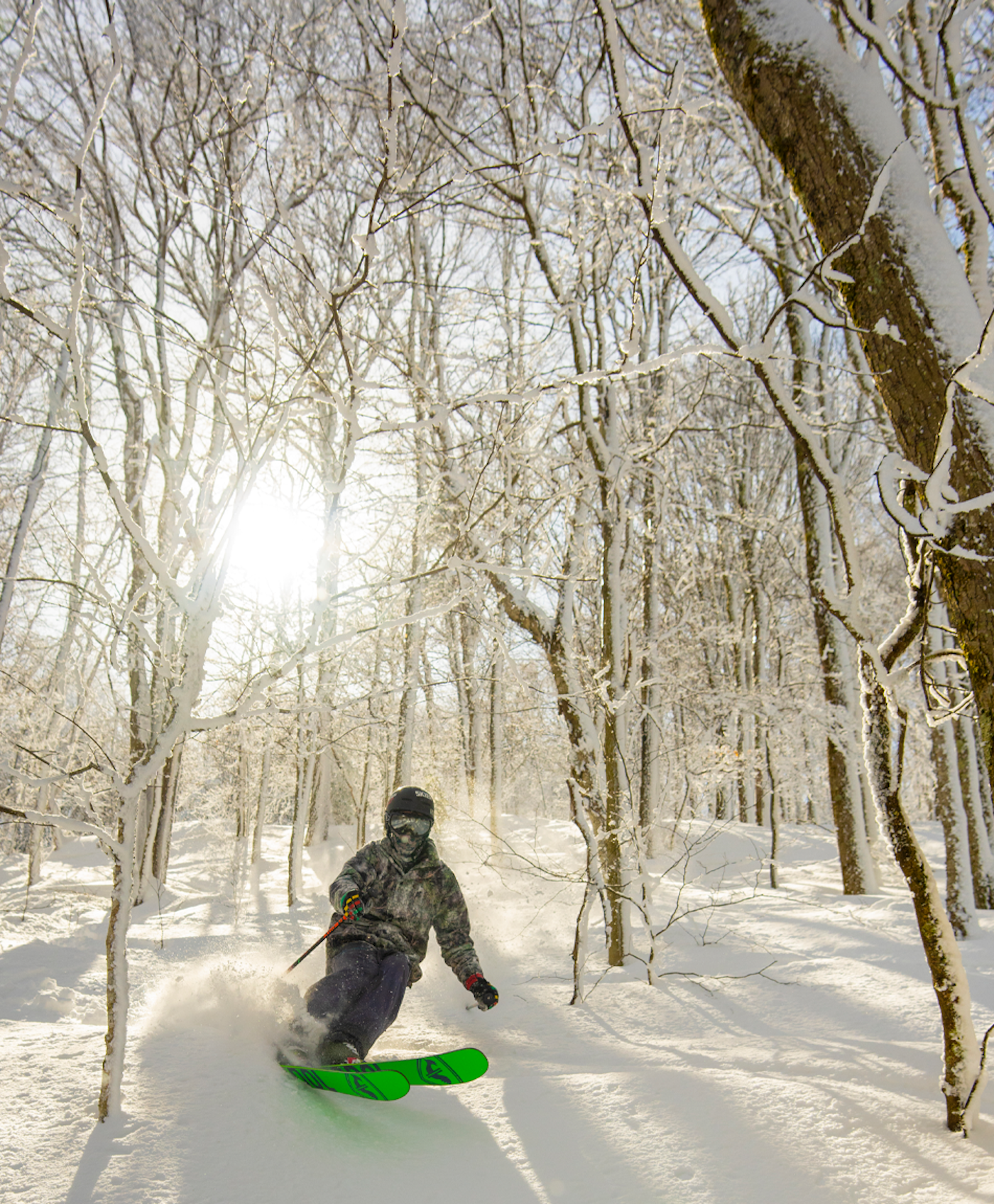
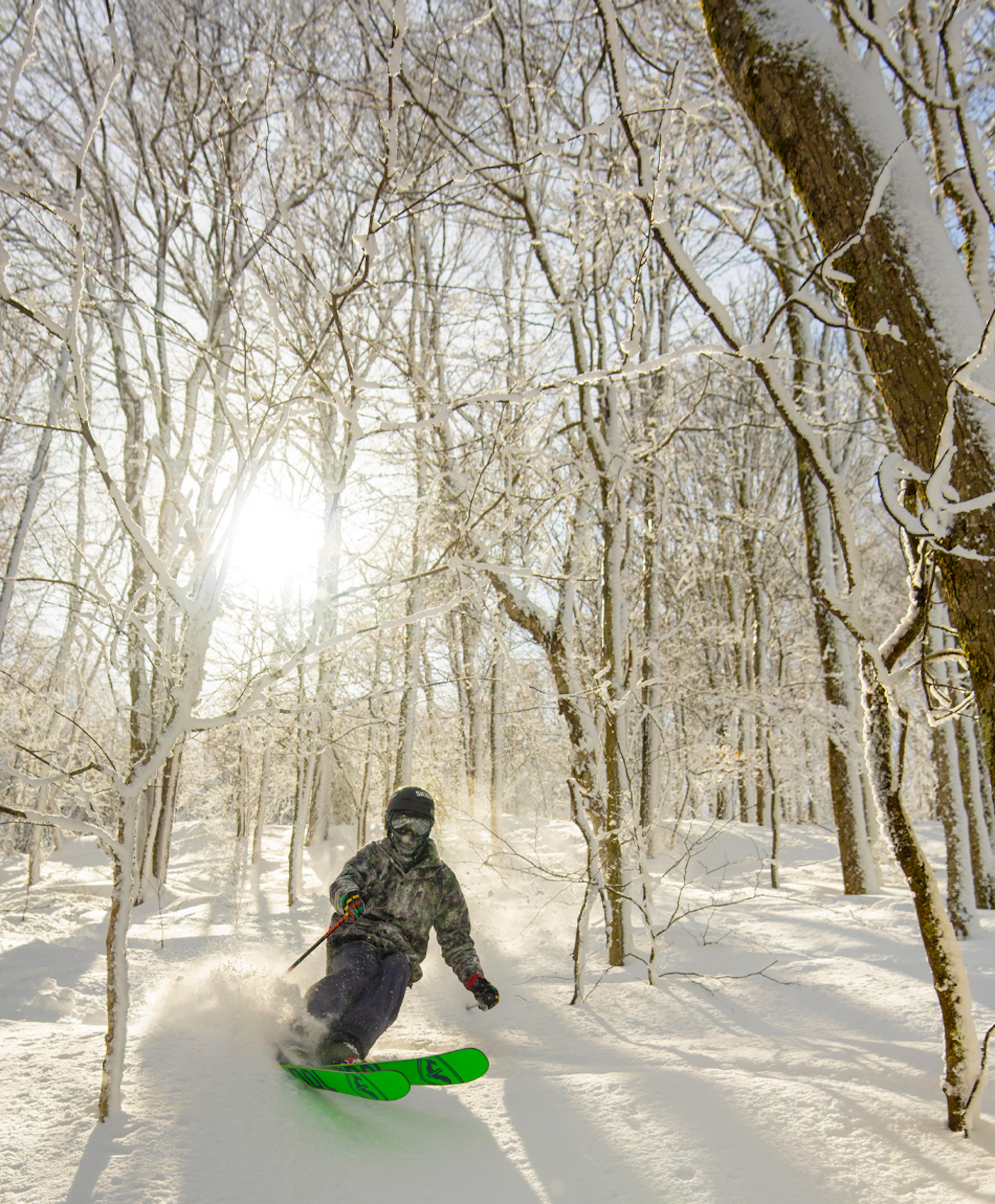
Ian is all smiles at finding a new line. “Welcome to tree skiing in West Virginia,” he says. “Tight and sketchy.”
Timberline, the Valley’s other resort just a few miles away, is even better. We catch up with Athey Lutz, who’s full of energy and big hucks as he shows us his favorite lines on the mountain, which has been revived after sitting dormant since 2018. New owners have pumped 10 million into the hill’s infrastructure, including a high-speed, six-person chair that makes running laps on the mountain easy and exhausting.
“This used to be a two-beer ride,” Athey says of the old lift, a dinosaur double that infamously fell apart with skiers on it in 2016. “Now you barely have time to chug a single beer.”
We watch Athey ski a series of whales—large humps of man-made snow blown onto the edge of the run—skipping across them effortlessly, catching air with each large hump, like he’s hitting a trampoline all the way down the mountain. Timberline isn’t large, just 91 acres, but the variety and quality of terrain is staggering. My legs go jelly on long bump runs, and we find big hits on the edges of steep groomers, but the true joy at Timberline is in the trees, which are tight, fall line affairs full of knee-deep powder. Each steep section seems to be followed by a more mellow saddle, like an eddy after a rapid in a river, giving me just enough time to gather myself before chasing Athey further into the forest.
I’m worked by the end of the day, but Athey is beaming with pride. This is the first season lifts have been running on Timberline in three years, and he couldn’t be happier. “You have to go really far north to find the kind of terrain that Timberline has.”
The sun is bright, but sinking by the time we retreat to our campsite at Whitegrass, where a full-blown après ski scene has blossomed. Dozens of skiers are mingling
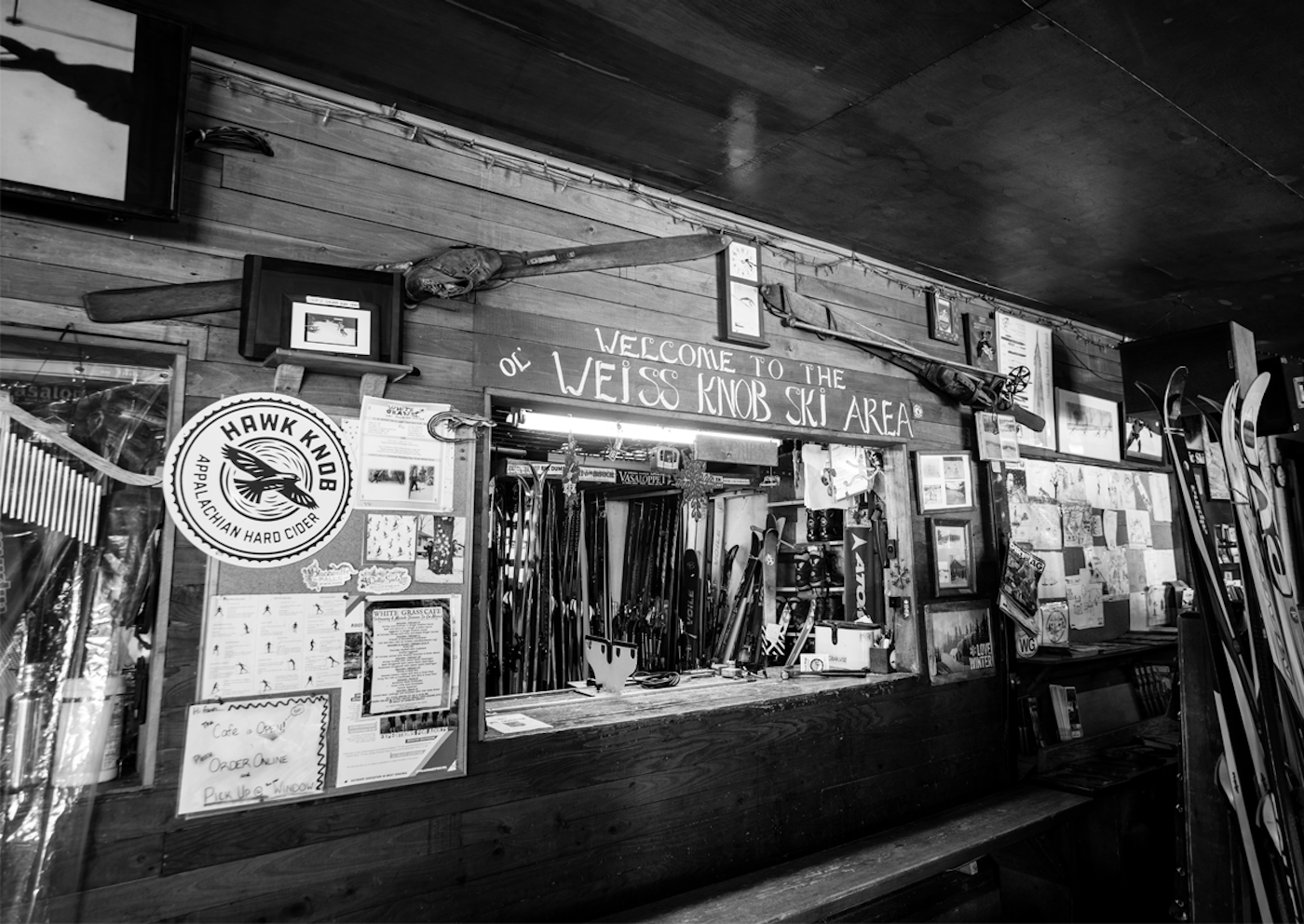
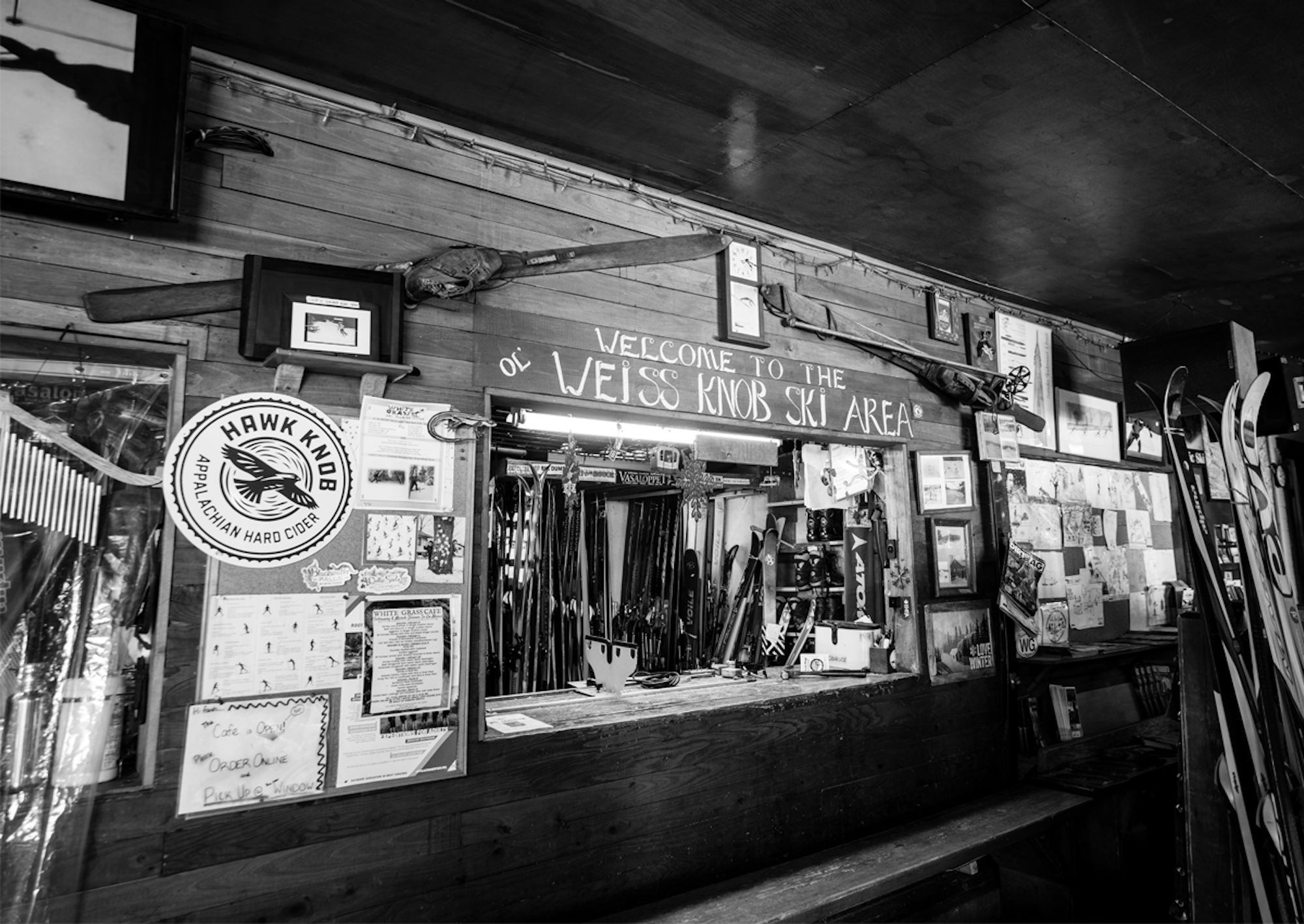
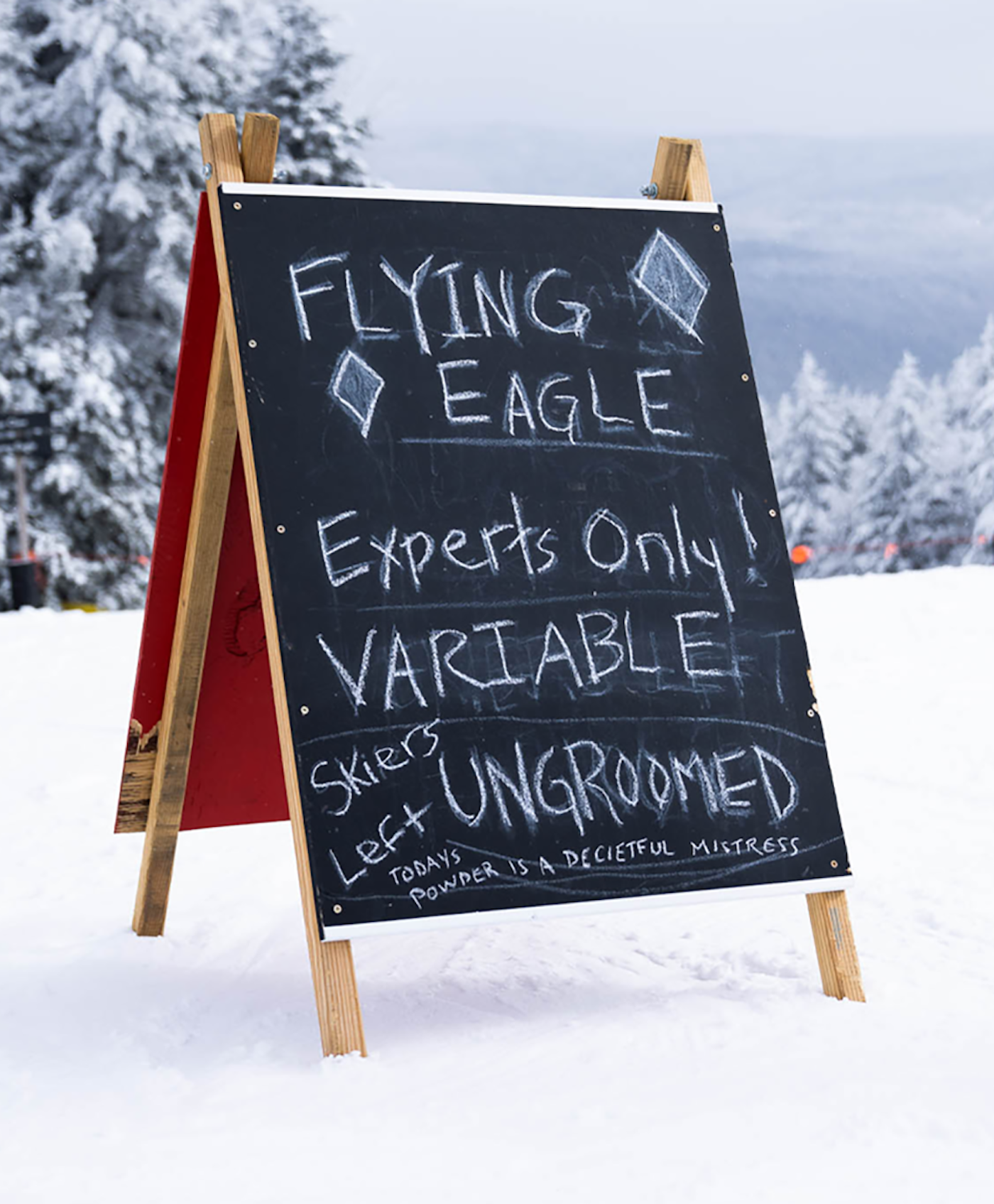
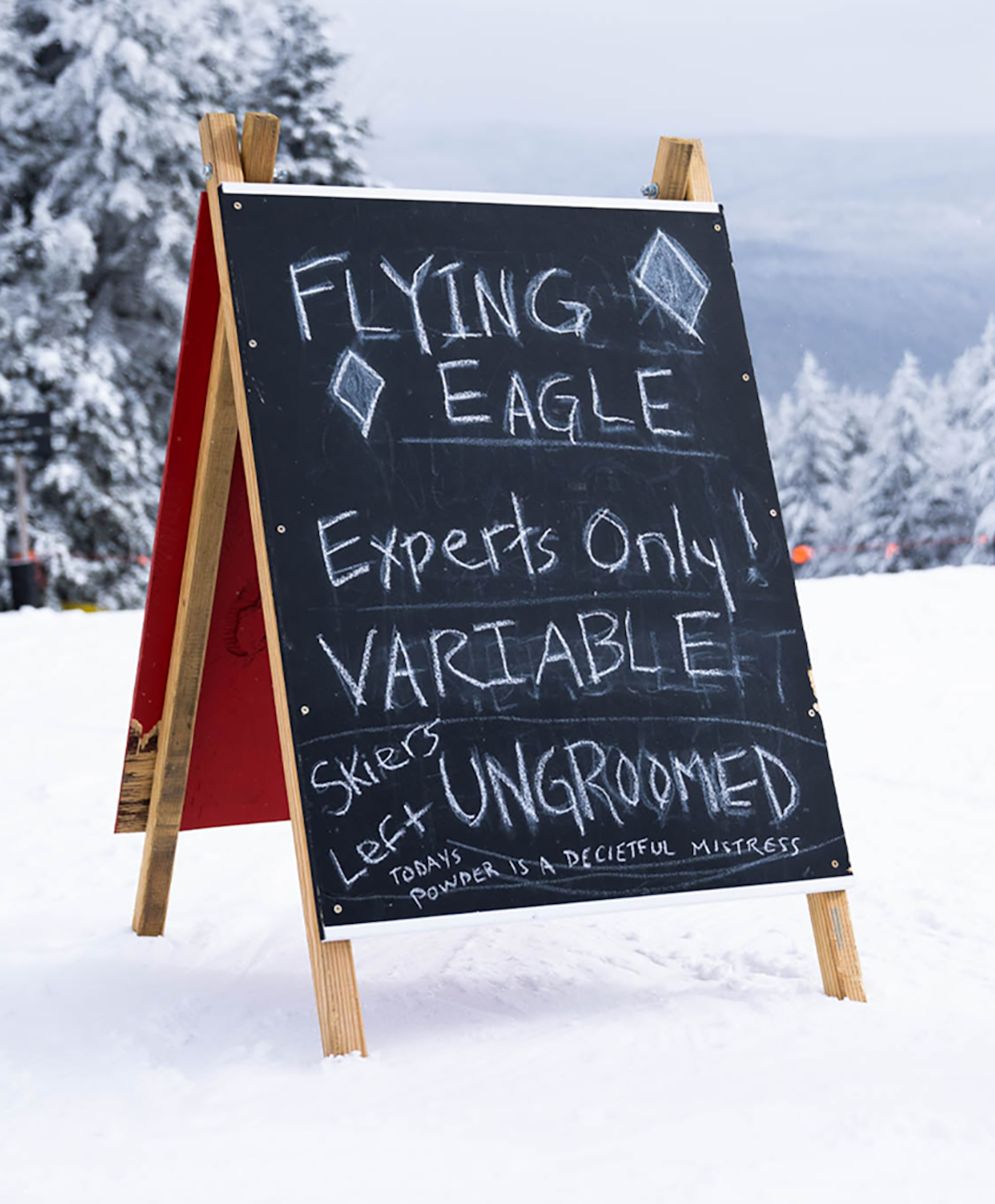
in the flat, snow-covered meadow at the base of the touring center. Someone has tapped a keg and a volunteer is cooking burgers on a grill. Chip Chase is milling around, handing out free shots of moonshine from a glass jug. We pull out the ping pong table and set it up near the keg and get a mellow tournament going, inviting people to play in their AT and tele boots.
Shit, did I forget to mention we brought a ping pong table on our ski trip? Yeah. We brought a ping pong table on our ski trip. ‘Cause why not.
The bonfire gets higher as the sun drops and more people make their way out of the woods, some of them wearing skinny skis, while others are on more modern fat gear. A group of four roll up fresh off an 18-mile ski, stoked at the accomplishment. A nice guy named Jamie saunters up to the fire with a cooler and a box of food and starts making everyone bourbon cocktails while setting out a charcuterie board to share. Everyone at Whitegrass wants to pitch in, to be more than just a spectator.
Skiing seems like an easier fit here than at the other resorts we’ve hit on this trip. Snowshoe typically has great conditions, and the mountaintop village developed by Intrawest several years ago is beautiful, but it feels like a miniature Vail, an island separate from the rest of the state. Winterplace, our final stop on the tour, is very much a local’s hill, but lacks any sense of ski culture. But in Canaan Valley, old West Virginia and new West Virginia seem to be more at peace. I ask Ian if there’s any tension between the multi-generation locals and the newer transplants.
“Sometimes, but not as much as when I was a kid,” he says, adding that when he was growing up, you either played football and baseball or you skied. You didn’t do both. But Ian himself is a bit of a conundrum. He has a mullet, but listens to NPR. He drives an Audi, but loves his dual sport bikes. He’s a living metaphor for what’s happening in the Valley as the disparate cultures meld into something entirely new. It makes me realize I don’t need to live out West to call myself a skier. Ski culture might be different in West Virginia, but it’s alive and well, and something to be proud of.
“I see more locals letting their kids learn how to ski. I see the cultures blending, redneck and skier,” Ian says. “And that blend makes for a really great party.”
It’s a party I can’t wait to crash again. I’m sure I’ll ski out West as restrictions are scaled back, but the minute we head south in the truck towards home, we start planning our next ski trip to West Virginia. There’s so much we didn’t get to tackle. We’ll plan for more days in Canaan Valley. We’ll bring headlamps for midnight backcountry missions. We’ll come prepared to boot up some of Ian and Athey’s secret stash tree lines. We’ll definitely bring the ping pong table. The mountains aren’t as big as the Rockies and the snow isn’t as deep, but the terrain is good and if you hit it right, there’s plenty of powder. And the ski culture is unlike anything else I’ve experienced. It’s a hell of a combination for a ski trip, especially if you like your turns with a side of moonshine. I’m relaxed as I head home, no identity crisis here. I live in the South, I ski the South and that’s enough for me.

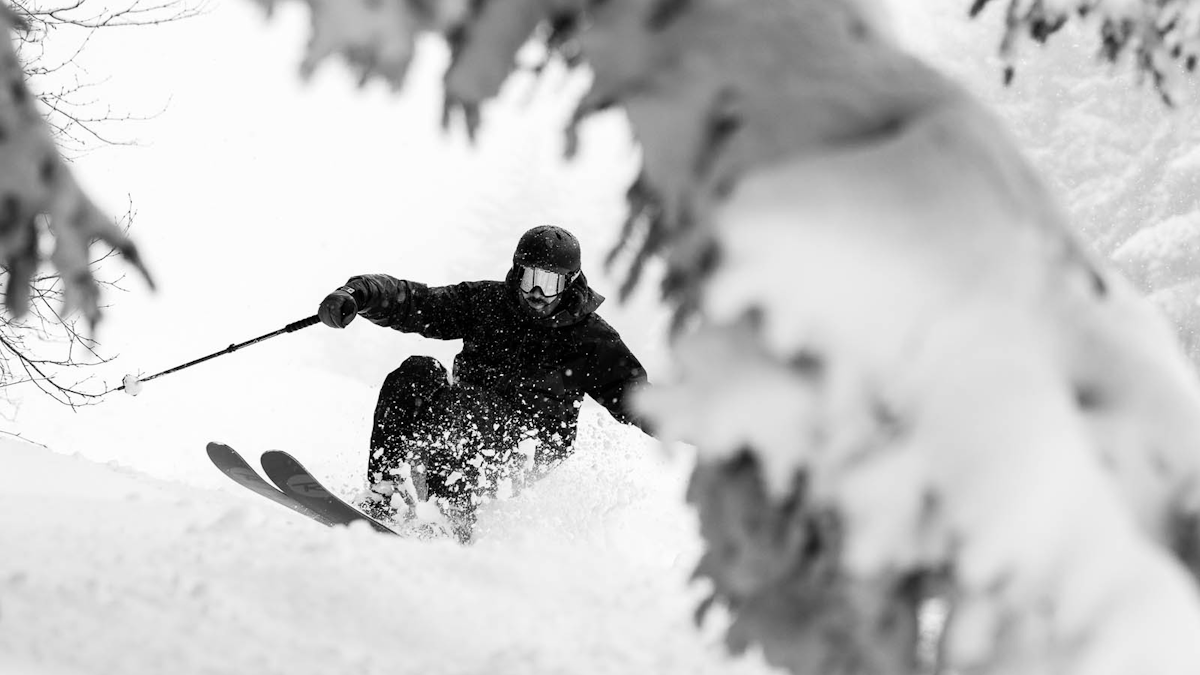

![[GIVEAWAY] Win a Head-to-Toe Ski Setup from IFSA](https://www.datocms-assets.com/163516/1765920344-ifsa.jpg?w=200&h=200&fit=crop)


![[GIVEAWAY] Win a Legendary Ski Trip with Icelantic's Road to the Rocks](https://www.datocms-assets.com/163516/1765233064-r2r26_freeskier_leaderboard1.jpg?auto=format&w=400&h=300&fit=crop&crop=faces,entropy)




![[GIVEAWAY] Win a Head-to-Toe Ski Setup from IFSA](https://www.datocms-assets.com/163516/1765920344-ifsa.jpg?auto=format&w=400&h=300&fit=crop&crop=faces,entropy)


